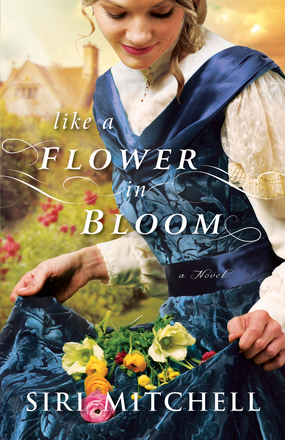
"Not having a choice is different than not caring."Charlotte Withersby has been caring for her father's correspondence and assisting in keeping a roof over their heads; well, not exactly, taking the pails in consideration to catch the rainwater... But, what would you think if all of a sudden ~ a suddenly ~ a man you have been answering mail to in place of your father, appears on your doorstep, is welcomed in? Before the course of the evening is over, he is at your dinner table and you must escort him to "his" room, as he is now your father's n~e~w assistant, in your place?
--Edward, Like a Flower in Bloom, 44
That is exactly what happens to Charlotte as her uncle has explained to her father that she needs to be available to society to be enhanced with a husband. Charlotte is quite satisfied with her life the way it is ~ assisting her father's botany research and writing articles. Well, they will just see when the first bills become due and his illustrated series lack subscribers. And Edward Trimble, or whatever his name is, knows the first thing about preserving specimens? Not according to the various shipments sent to them from him.
As Charlotte comes up with a plan to show them how necessary she is, she isn't so certain it was a good path to take. Not only are they not noticing her absence, they are carrying on as if she had never been there. Absence makes the heart grow fonder, isn't exactly happening. In fact, she is sure it isn't. Unexpendable.
Fortunately, so it seems, at her first outing with her uncle as guardian, she meets a Miss Templeton who merits each gentleman with their prone to matrimony. Since Charlotte is adverse to such an idea, two prospects are suggested, who may be in her line of thinking. Measuring everything in her botanical way, is is not surprising she surmises the attributes of gentlemen in the same manner.
Something about him reminded me of an invasive weed that has crept its way into a flower garden, trying to insinuate itself among the other plants. He looked harmless enough, he probably was harmless enough, but somehow he didn't quite belong.It is comical how the two young women proceed to procure a future meeting at two appointed times on the same afternoon to view each gentleman's collection of plants. The plan is to be seen coming and going with repeated invites to secure a visual accent of interest.
--Charlotte, Ibid., 86
Charlotte is my very favorite character as she stays true to herself, even amid new norms thrust upon her of when to speak and when to keep her thoughts silent. To the end, you are not certain how it will all turn out. You may find your allegiance changing. The story is conversational between the characters throughout.
I thoroughly enjoy Siri Mitchell's writings. She is merriment and engaging as her characters come alive off the page as if you are eavesdropping. Somehow, I feel they would invite us in willingly.

Siri Mitchell is the author of nearly a dozen novels, among them the critically acclaimed Christy Award finalists Chateau of Echoes and The Cubicle Next Door. A graduate of the University of Washington with a degree in business, she has worked in many different levels of government. As a military spouse, she has lived in places as varied as Tokyo and Paris. Siri currently lives in the DC-metro area. Visit her website here.
***Thank you to author Siri Mitchell and to Bethany House Publishers for sending me a copy of Like a Flower in Bloom for review. This review was written in my own words. No other compensation was received.***
Two days remaining ~ enter here!

This novel is set amidst the botany craze of 1850s Victorian England. Why botany?
Botany
is a field that was pioneered, in large part, by women. During the
1850s, however, the profession of scientist developed and the field was
wrested away from them. It’s not really a novel about botany; it’s a
book about a woman displaced from her passion by people who discount her
talents due to her gender. It’s fascinating to me just how relevant
that struggle still is.
Do you have a personal interest in botany?
Not
beyond dabbling in my own flower beds. I’ve always loved flowers, white
roses are my favorites, but my interest in plants stops there.
How did you come up with the idea?
My public library has a twice-annual used book sale, and I came across the gorgeously illustrated Women of Flowers
by Jack Kramer. In it, he tells the stories of dozens of female
Victorian botanical illustrators whose work was credited to men. The
injustice of that was so enraging that I knew I had to write about it.
Did you enjoy traveling back into history with Like a Flower in Bloom?
I
enjoyed visiting an era that had so many social rules. It was
especially fun to develop a heroine who was so completely ignorant of
them all. It developed into a comedy of errors that was delightful to
write.
What was the most surprising thing you learned?
That
botanists had a reputation during the era for being philosophic
thinkers with hardy constitutions and a winsome sort of charm. In the
wilds of the colonies, scouring the globe in search of rare specimens,
they perpetuated a reputation much like that of Indiana Jones. I was
also surprised that the study of botany birthed the genre of literary
nonsense best exemplified by the works of artist/writers like Edward
Lear and Charles Lutwidge Dodgson, better known as Lewis Carroll.
~*~
No comments:
Post a Comment